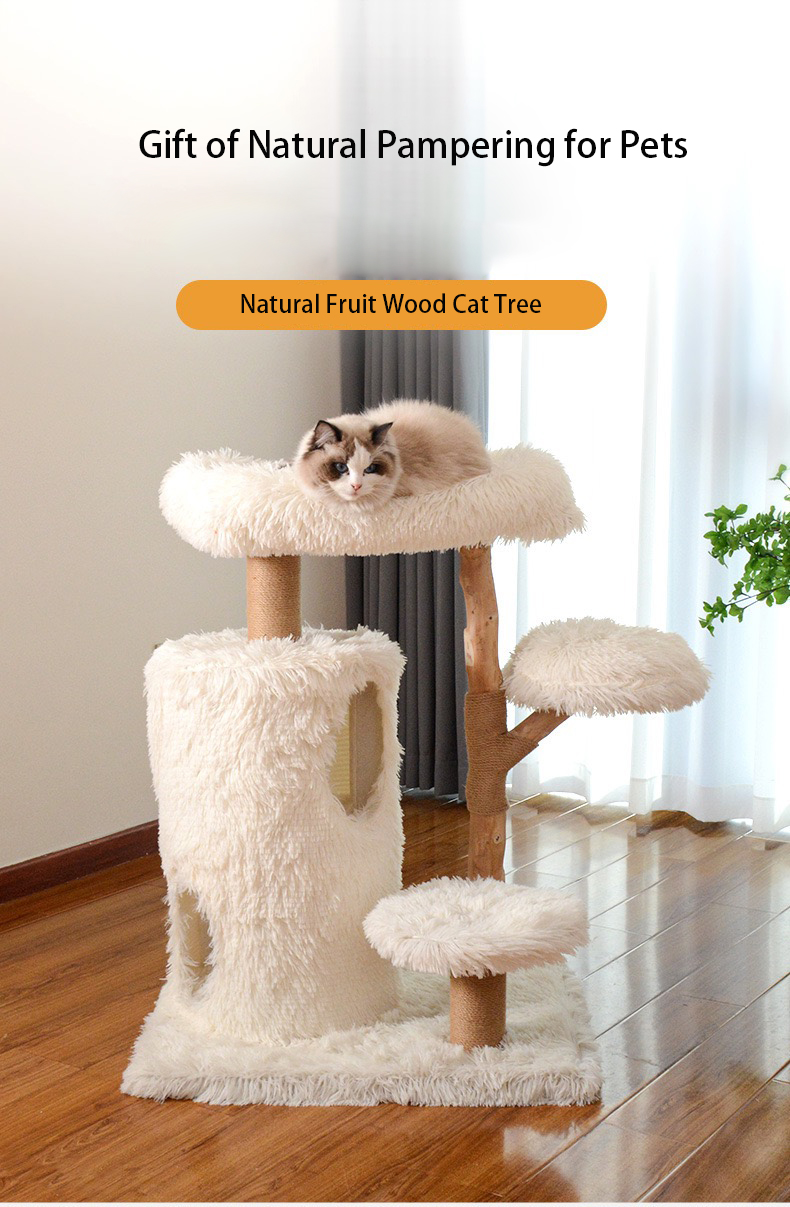Cat tree bought home, but cat never touches it? 90% made mistakes.
The cat tree that cost me much money—my cat would rather stay in a cardboard box than touch it. What on earth is wrong?” This is a common confusion among countless pet owners. In fact, a cat’s “indifference” to a cat tree isn’t due to being tsundere;it’s likely that you’ve overlooked a core issue: whether the cat tree aligns with their “wild instincts.” 90% of failed cases stem from choosing based on human aesthetics rather than a cat’s natural tendencies.
Your Cat Won’t Touch the Cat Tree? Check These 3 “Instinct Clues” First
Cats are descendants of desert hunters—climbing, scratching, and hiding are instincts etched into their DNA. If a cat tree goes against these instincts, it’s no wonder your feline friend snubs it.

1. “Height ≠ Safety”: That “High Perch” You Picked Might Be an “Exposure Trap”
Humans often think “the taller, the better,” but cats’ height preferences split into two types:
- Confident cats (like orange tabbies or American Shorthairs) enjoy open platforms over 1.5 meters high to survey their territory.
- Shy cats (like Ragdolls or British Shorthairs) prefer enclosed spaces under 1 meter, with barriers for security.
If your cat always hides under the sofa but you bought a 3-tier open cat tree, it’ll likely avoid it—high perches feel “too exposed, risky for ambushes.”
2. “Wrong Scratching Zone”: Sisal Rope and Corrugated Cardboard Aren’t “One-Size-Fits-All”
Scratching isn’t just about sharpening claws—it’s how cats mark territory with scent. But:
- Cats that scratch vertically (standing up) need sisal-wrapped posts over 10 cm in diameter.
- Cats that scratch horizontally (while lying down) prefer corrugated cardboard pads or sloped surfaces.
One owner bought a cat tree with smooth posts, only to find their cat scratching the sofa daily—it craved “a rough surface to dig into with force.”
3. “Entry Design”: That “Cute” Narrow Opening Might Be a “No-Go Zone”
Many trendy cat trees have small circular entrances for aesthetics. But:
- Overweight or senior cats can’t squeeze through.
- Skittish cats avoid tight openings—they fear “no quick escape routes.”
Watch your cat: If it loves large cardboard boxes, skip cat trees with tiny entrances.
Choose the “Instinct-Matched Style” – 3 Steps to Make Your Cat Fall in Love with the Cat Tree Voluntarily
1.Select the Structure Based on Personality: Provide a “Sense of Concealment” for Timid Cats and “Exploration Desire” for Lively Ones
- Timid and sensitive cats: Prioritize options with “a covered cat nest + low platforms”, such as a two-tier cat tree with a tent-like top. The bottom tier can be placed next to a cabinet, and the top tier should not exceed 80 cm in height.
- Lively and active cats: Opt for styles with “multiple staggered tiers + hanging toys”, like those featuring a hammock, springboard, and tunnel. The height difference between tiers should be 20 to 30 cm (to facilitate jumping), and a feather toy can be hung on the post.
- Senior/overweight cats: Choose “step-style designs” to avoid vertical climbing. Add 5 cm guardrails around the platform edges (to prevent falls).
2. “Mix and Match” Scratching Areas: Cater to Different Scratching Habits
A high-quality cat tree must have both “vertical + horizontal” scratching zones:
- Vertical posts should be wrapped with sisal rope (the thicker, the more durable). Leave a 1 cm gap when wrapping (to make it easier for cats to hook their claws).
- Place corrugated cardboard scratches in horizontal areas (replaceable ones are best), or attach sisal rope to the edges of the platforms.
Tests show that cat trees with both types of scratching zones have a 60% higher usage rate by cats compared to those with a single type.

3. Placement: Position It in the “Cat’s Core Territory”
Don’t tuck the cat tree in a corner – cats like to observe movements in “busy areas”.
- Place it near a window (to satisfy their need to watch birds and sunbathe).
- Position it next to a sofa or bed (so they can easily jump up to “monitor” you).
- Avoid placing it directly opposite air vents or noise sources (areas near hair dryers or washing machines can make them anxious).
One user moved the cat tree from the balcony to next to the living room coffee table, and the cat climbed onto it the same day – because that spot was the best place for it to “keep track of what’s happening in the house”.
One “Ice-Breaking Tip”: Make the Cat Tree Naturally “Attractive”
If your cat still ignores the cat tree, try the “scent guidance method”:
- Rub its usual catnip on the cat tree;
- Lay its used blanket on the platform;
- Play with it using a teaser wand next to the cat tree for 5 minutes every day, and leave the toy on the top tier after playing.
Remember: Cats are “territorial animals.” When they feel “this is my territory,” they’ll naturally start exploring it on their own.
Stop worrying about “the cat not touching the cat tree” — the problem isn’t with the cat, but whether you’ve understood its instincts. Choose a cat tree that fits its nature. You’ll find that the aloof little furry friend will quietly turn it into its “exclusive castle.”
Explore our collection of instinct-matched tree to find the perfect one for your feline friend.https://barkmeowpets.com/index.php/product/flower-shaped-cat-tree/


